Physical Address
304 North Cardinal St.
Dorchester Center, MA 02124
Irritant contact dermatitis (ICD)
Accounts for 80% of all causes of contact dermatitis
Secondary to a local toxic effect caused by a topical substance or physical insult
Allergic contact dermatitis (ACD)
Accounts for 20% of all causes of contact dermatitis
A delayed-type hypersensitivity reaction to a substance to which the individual has been previously sensitized
Compared to ICD, more commonly presents with pruritus during the acute phase
One of the most common occupational dermatoses is ICD.
Plants can cause a variety of skin reactions, the most common in North America being ACD to poison ivy.
Localized, non-immunologically mediated cutaneous inflammatory reaction ( Figs 12.1–12.5 ).
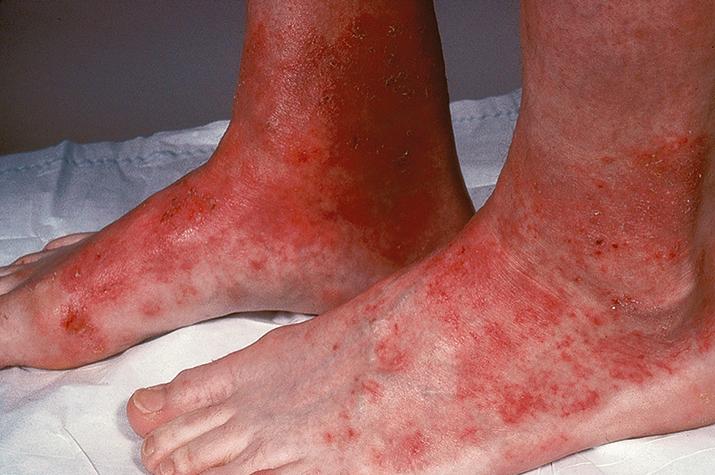
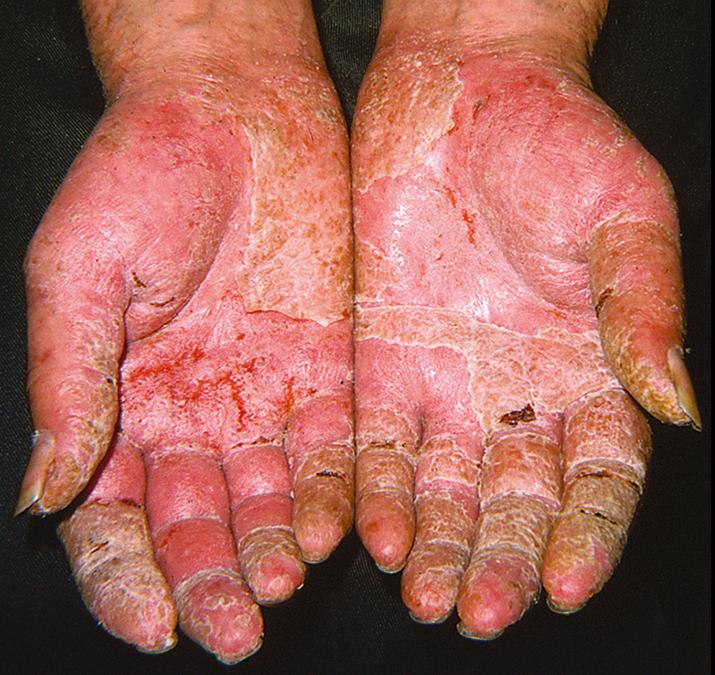
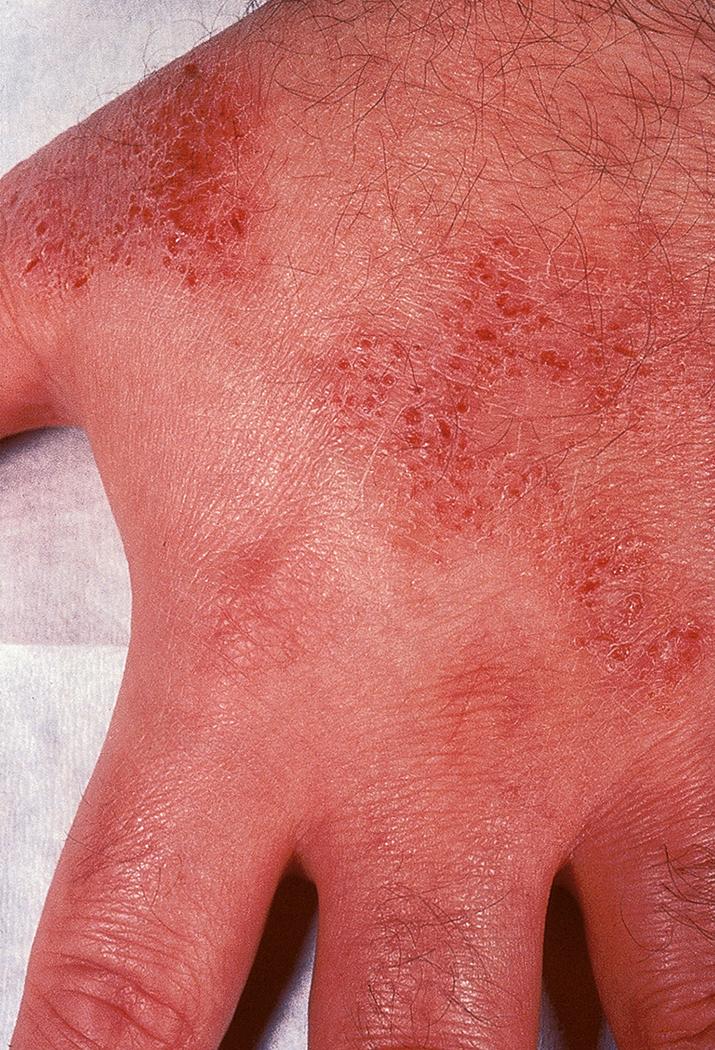
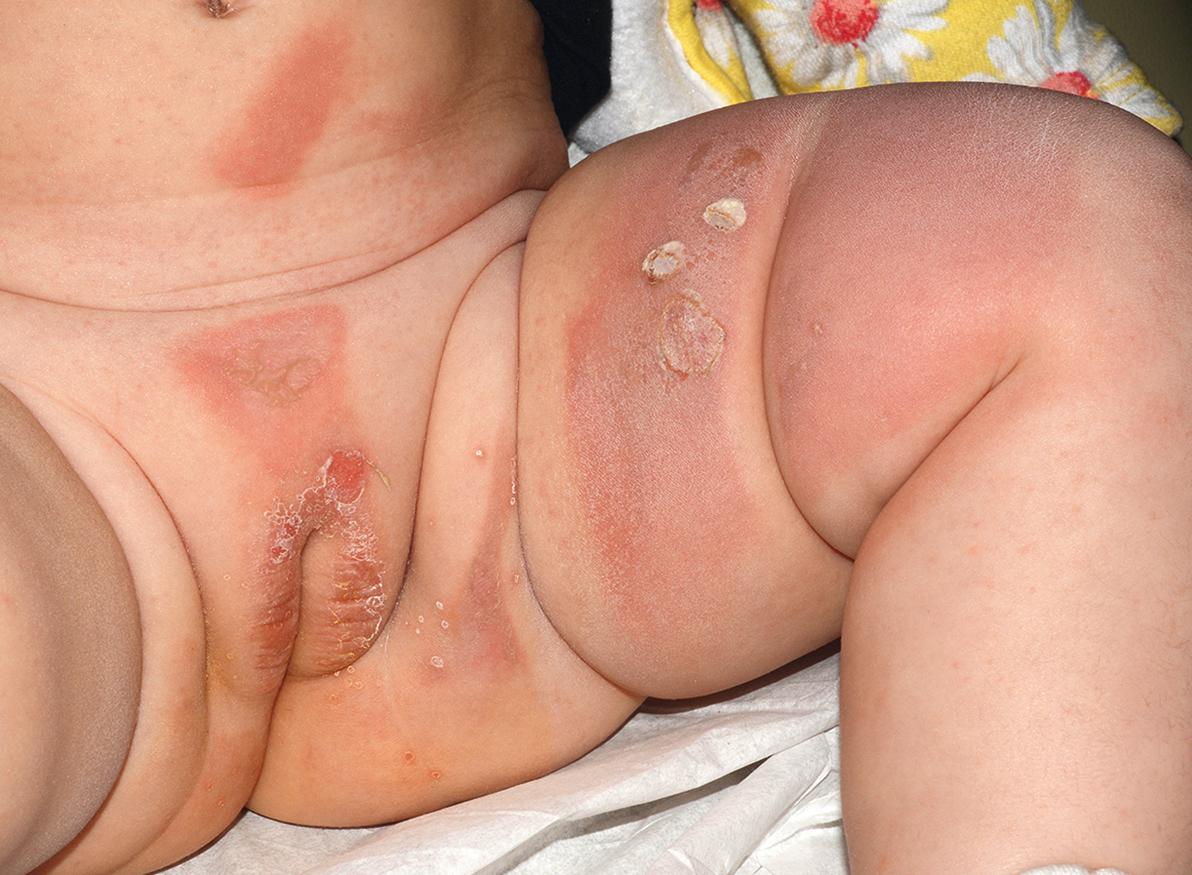
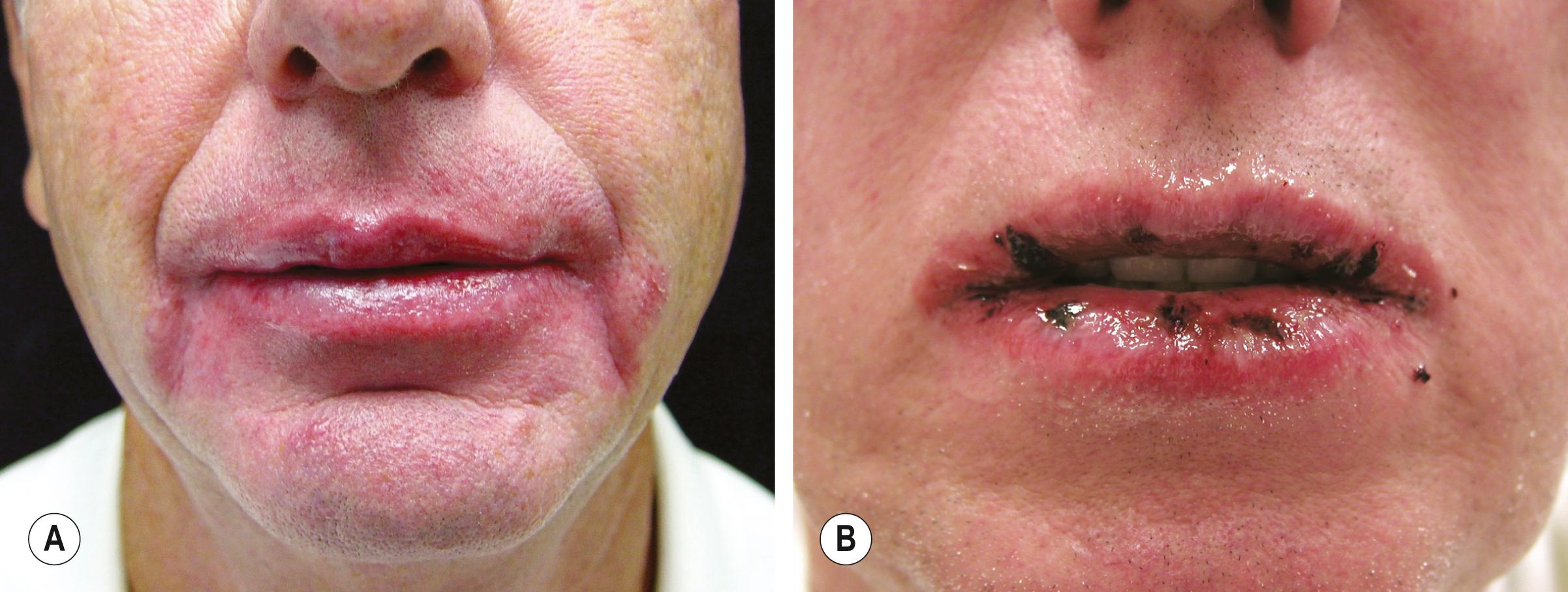
Secondary to a direct toxic effect
Chronic – erythema, fissures, and scale which is oftentimes thick
Acute – erythema, edema, and vesiculation followed by erosions and scaling; in severe cases may lead to epidermal necrosis (a “chemical burn”)
Commonly affects the hands (see Fig. 13.1 ); Table 12.1 reviews pertinent questions for when environmental exposures are suspected.
| Occupation | Are findings consistent with work exposure as a cause? |
| Does time off result in improvement? | |
| Materials handled | Do labels and material safety data sheets (MSDS) list potential irritants or allergens? |
| Is there a relationship to handling food? | |
| Other persons in workplace affected? | |
| Protective equipment (e.g. gloves) used? | |
| Previous skin disease or history of atopy | Is there a history of eczema as a child? |
| Known allergies | Is there unrecognized exposure? |
| Treatment | May cause allergic contact dermatitis |
| Hobbies | Including exposure to plants |
A common cause of cheilitis (lip-licking; see Fig. 13.5 ).
May be secondary to an occupational exposure ( Table 12.2 )
Common causes are soaps and wet work, and less often petroleum products, cutting oils, and coolants
| Irritant | Examples of major exposure(s) |
|---|---|
| Inorganic acids | |
| Hydrofluoric acid | Etching of glass/metal/stone; rust/stain/limescale removers |
| Sulfuric acid | Manufacturing of fertilizers, textile fibers, explosives, paper |
| Hydrochloric acid | Production of fertilizers, dyes, paints; used in food processing |
| Chromic acid | Used in metal treatments |
| Nitric acid | Production of fertilizers and explosives; in cleaning products |
| Phosphoric acid | Used in fertilizer, pharmaceuticals, water treatment |
| Organic acids | |
| Formic acid | Used as a neutralizer in leather manufacturing |
| Alkalis | |
| Sodium hydroxide | Used in the manufacture of bleaches, dyes, vitamins, pulp, paper, plastics, soaps and detergents |
| Calcium oxide | |
| Metal salts | |
| Arsenic trioxide | Aerosolized in the smelting of metals |
| Beryllium compounds | Used in the production of hard, corrosion-resistant alloys |
| Solvents | |
| Stoddard solvent | Used in dry cleaning |
| Water | Ubiquitous |
| Alcohols | |
| Glycols | Commonly used in cosmetic products |
| Detergents and cleansers | |
| Sodium lauryl sulfate | Detergents and cleansers |
| Cocamidopropyl betaine | Detergents, therapeutic formulations, personal care products |
| Disinfectants | |
| Ethylene oxide | Medical sterilization |
| Chloroxylenol | Baby powders and shampoos |
| Iodines | Surgical scrub, shampoo, skin cleansers |
| Benzalkonium chloride | Used for instrument cleansing; in ophthalmic solutions |
| Food | Pineapples, garlic, mustard |
| Plants | Thistles, prickly pears, grasses |
| Plastics | |
| Bodily fluids | |
| Fabric/man-made vitreous fibers (e.g. fiberglass) | |
DDx: when severe, thermal burn; ACD and other dermatitides; there may be a combination of causes, e.g. ICD and ACD, ICD and atopic dermatitis.
Rx: primarily avoidance of the irritant.
In contrast to ICD, more commonly presents with pruritus during the acute phase; the chronic phase has significant overlap with ICD ( Fig. 12.6 ).
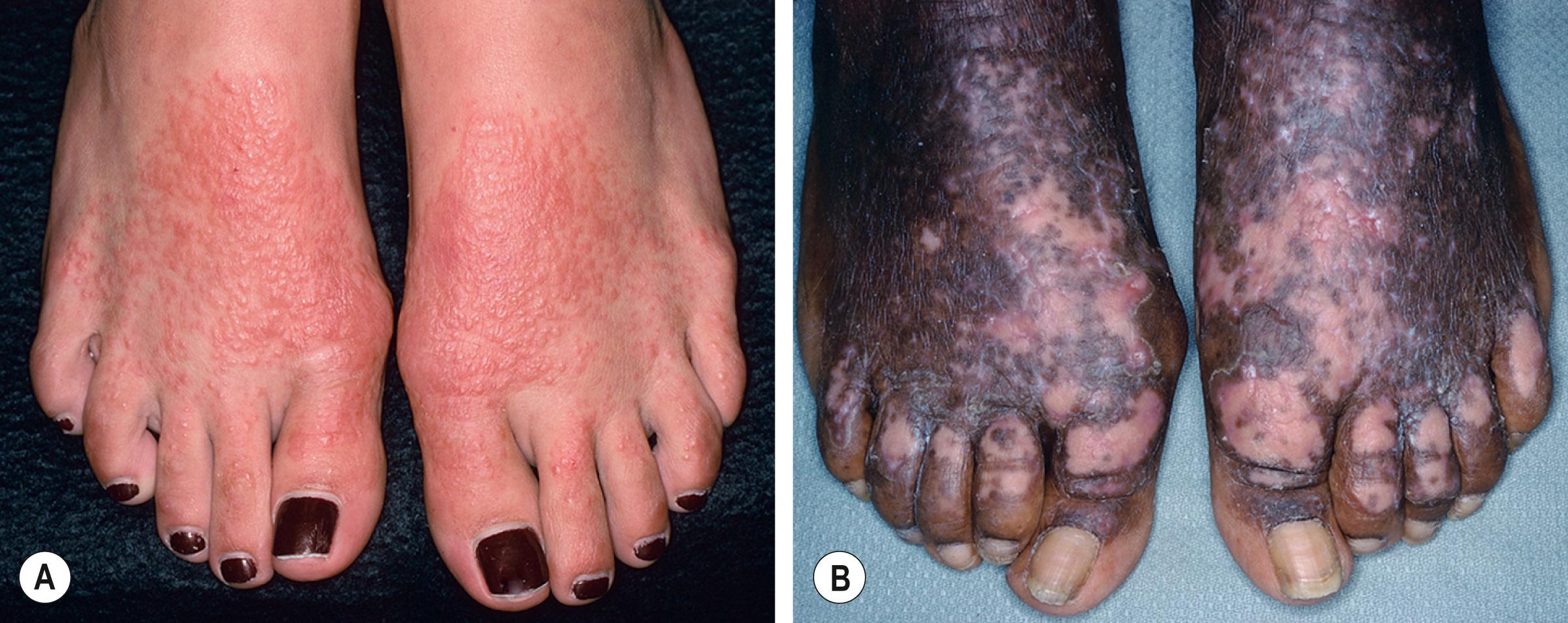
Initially, well demarcated and localized to site of contact with the allergen ( Figs 12.7–12.12 ).
Acute – in addition to erythema and edema, vesicobullae and weeping may develop ( Fig. 12.7 )
Chronic – often lichenified with scale ( Figs 12.6B and 12.9 )
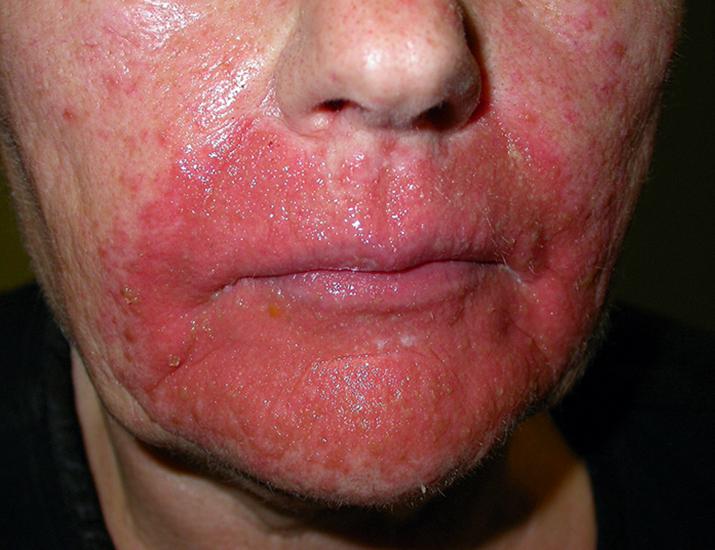
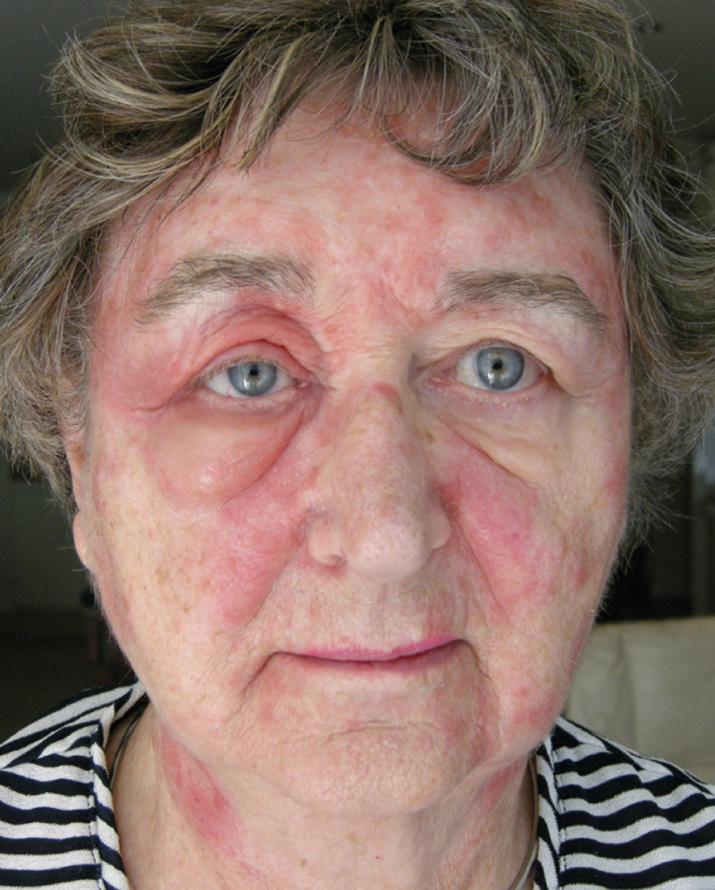
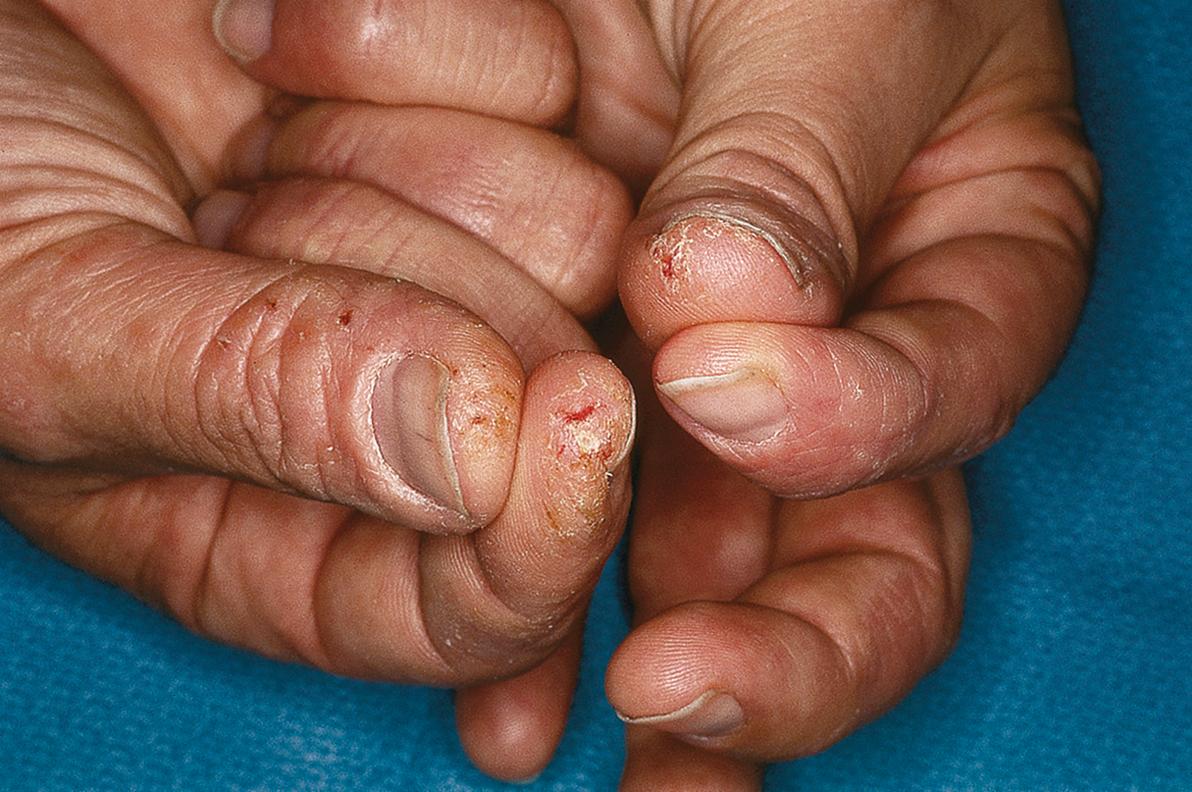
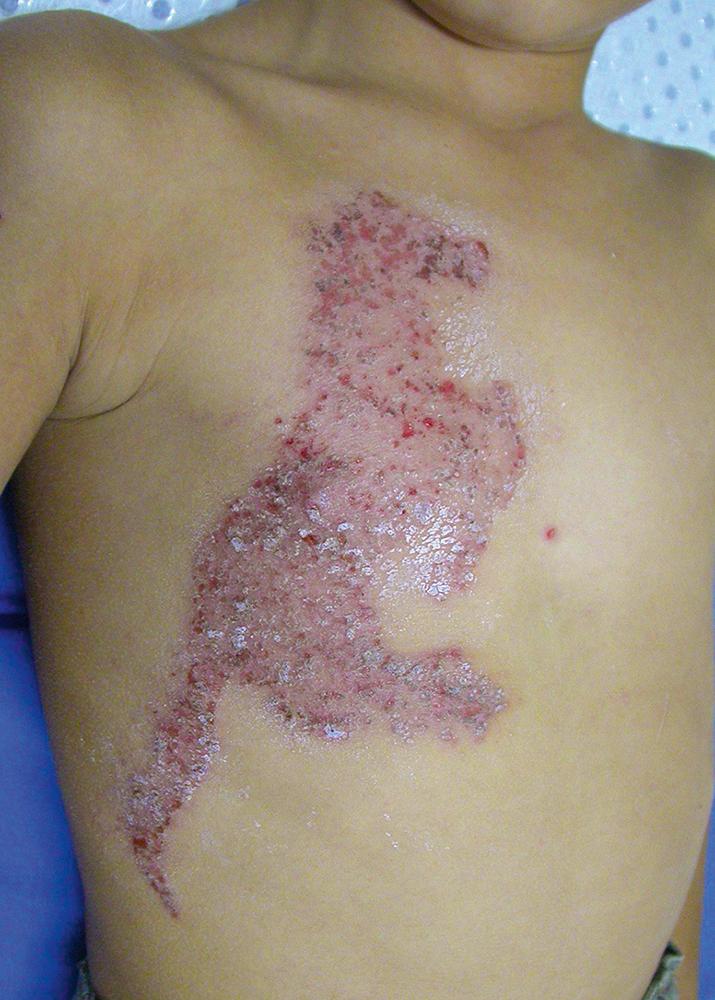
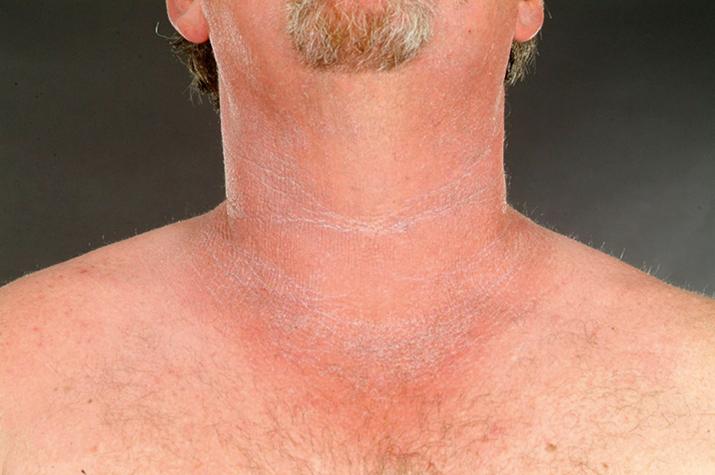
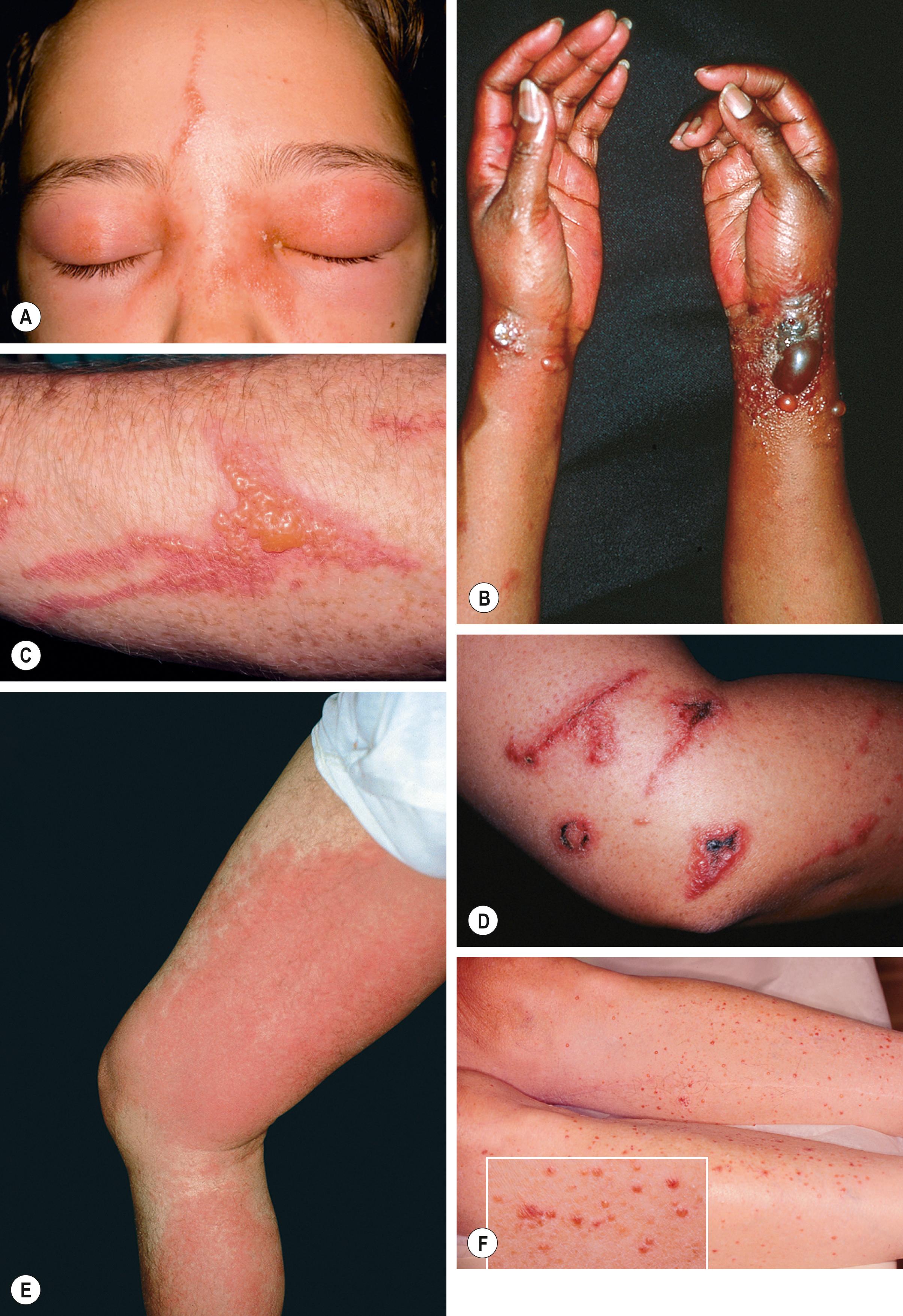
Can have autosensitization with extension beyond original site (see Ch. 11 ); airborne allergens primarily contact exposed skin and can mimic (or overlap) photoallergic or phototoxic reactions ( Fig. 12.11 ).
Occasionally, there is a diffuse, patchy distribution, depending on the allergen (e.g. body wash or shampoo) and/or concomitant atopic dermatitis.
Common allergens are metals, fragrances, preservatives, and topical antibiotics, as well as plants, in particular poison ivy/oak (see below) ( Fig. 12.12 ).
Common causes of occupational ACD are rubber, nickel, epoxy resin, and aromatic amines.
Suspected allergens should be avoided; a repeat open application test can be tried first but patch testing is required for accurate diagnosis; detailed lists of allergen-containing products are available.
In patch testing, specific concentrations of allergens are dissolved in petrolatum or water and placed in wells that are then applied to the patient’s back for 48 hours ( Figs 12.13 and 12.14 ); grading of reactions is performed at two time points ( Table 12.3 ).
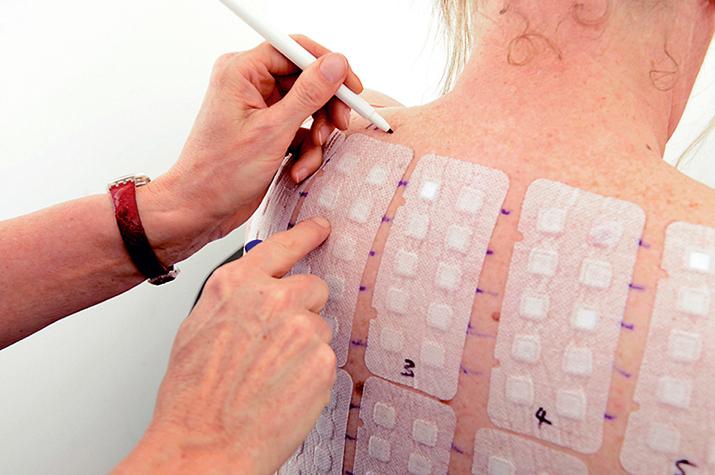
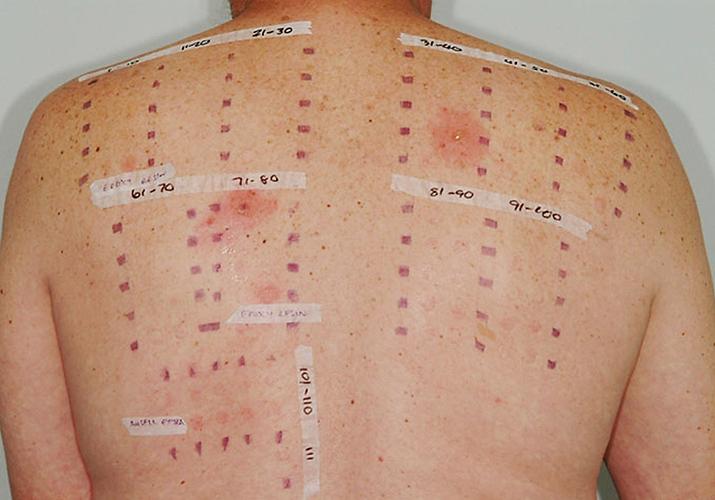
| +/− |  |
Doubtful reaction, faint macular erythema |
| + | Weak, non-vesicular reaction with erythema, infiltration, and papules | |
| ++ | Strong, vesicular reaction with infiltration and papules | |
| +++ | Spreading bullous reaction | |
| − | Negative reaction | |
| IR | Irritant reaction |
DDx: other forms of dermatitis (ICD, atopic dermatitis, stasis dermatitis, seborrheic dermatitis), erythematotelangiectatic rosacea, dermatophyte infection.
Rx: short term: topical and systemic CS depending on severity; long term: avoidance of allergen(s).
Become a Clinical Tree membership for Full access and enjoy Unlimited articles
If you are a member. Log in here